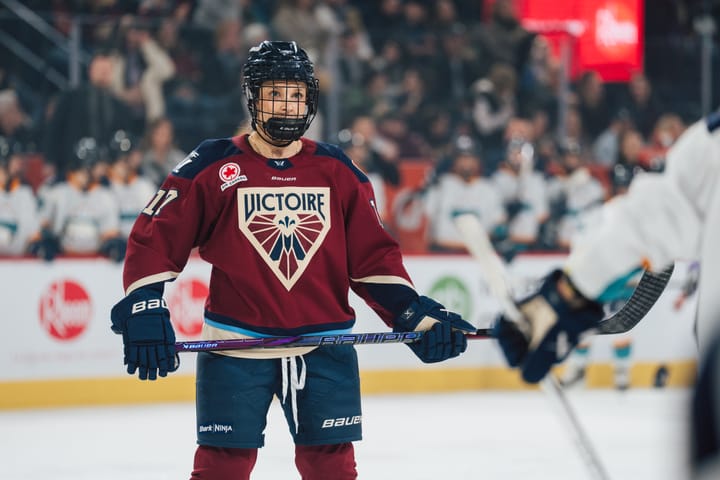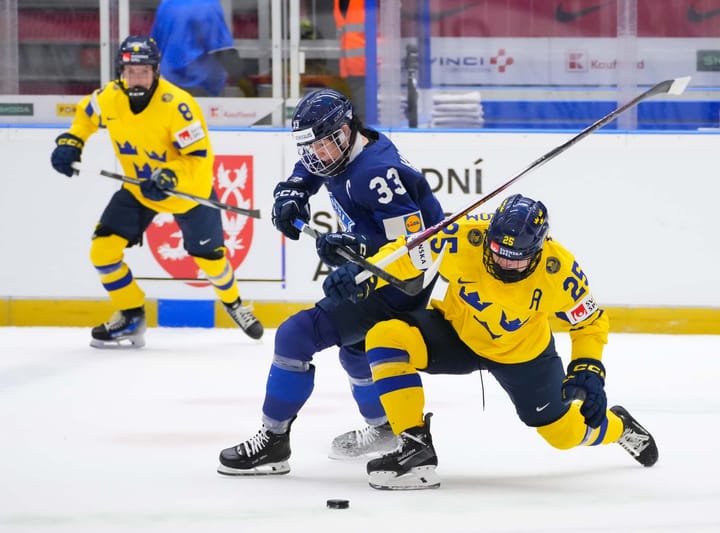TIG Roundtable: $25 million investment to the PHF
Last week, the PHF announced a $25 million investment over the next three seasons from the Board of Governors. The money will increase the salary cap and also bring the long-awaited expansion to Montreal. It’s obviously an important moment for the PHF and women’s hockey, and we had some thoughts about it.
So we gathered around our virtual table to share them.
Related
PHF to increase salary cap, expand next season
PHF players react to expanded salary cap, teams
Jen Silber:
I’m thrilled about the investment, of course — smarter people then me have repeatedly said that women’s hockey cannot grow into its full potential without the same sort of dedicated investments that went into men’s sports leagues in their early years — but I’m mostly interested in the logistics of the planned expansion.
Eight teams would allow for two four-team divisions, which could amp up local rivalries. It might even help simplify travel logistics, depending on where the new American team is established (Illinois? Michigan? Ohio?). Off the bat, a 28-game schedule sounds like it means each team would play every other team four times in a season. But it might be more entertaining if teams played more games within their division and fewer games against teams in the other division. At least, that’s what I’d love to see.
Anne Tokarski: Like Jen said, this kind of investment into women’s hockey is great to see, for a number of reasons. One thing that sticks out to me is the faith that the Board of Governors has in this league and its goals — so much faith that they’re willing to invest $25 million into its future. That says a lot to me.
I’m also really excited for the announcement of the eighth expansion team. I think two expansion teams in one offseason is a little ambitious, but that doesn’t mean I’m not excited to see how it pans out. There are loads of talented young creatives in the sports social world that can help launch a brand — after all, we saw it with Alyssa Turner and the Toronto Six — and that’s one of the things I’m most excited for. Not to wax poetic, but there’s so much opportunity for creativity with expansion teams, and I think that’s what I’m most looking forward to.
Simon Hopkins: The investment marks the PHF’s commitment to improving the prospects for women who wish to play sports professionally. The changes for upcoming seasons are a step in answering the calls of some of the loudest player advocates in women’s hockey, the PWHPA. PWHPA players abstain from paid hockey in protest of poor pay, health insurance, and training opportunities. The salary increase will more than double the average player salary and will also bring improvements to insurance, training facilities, and ice time.
I hope for next steps that will improve opportunities for even more players. Low pay has long required players to look to second jobs or family support for financial stability. As a result, many players simply leave the sport after college and for foreign players, it’s largely impractical to play in North America. But as PHF salaries continue to grow and become livable, paid women’s hockey becomes a possibility for more and more players. The prospect of professional women’s hockey without the need for second jobs is inspiring.
Casey Bryant: Good news is very hard to come by in the hockey world right now. That’s true in every circle from pro on down to junior and below. We are in our third season that has featured postponements, dormant seasons, or even worse, shuttered doors altogether. So to tout such a sizable, multi-year investment is like spotting an oasis in the desert.
The key when an entity gets a major influx of cash is knowing how to spend it wisely. Injecting straight into the players’ salaries is momentous in the grand scheme of the sport. Hopefully the league can follow good money with good money.
Leighann Strollo: We’ve all said for so long, what this league and pro women’s hockey needs as a whole is the opportunity to make a living wage. While the estimated $35,000-ish players could make isn’t, by any means, the end goal, it finally means that these players can dedicate most, if not all of their time to professional hockey. That is something that has never been done before in North America, without being named to an Olympic roster. I can not understate how huge that is. That is what has always set this league behind in comparison to leagues like the WNBA or the NWSL, who are still in a push to increase their salaries as well. This is such a game changer. I am so incredibly happy for these players and future players who are seeing a brand door appear as an option for them after college and beyond.
Additionally, like it’s been mentioned before, the added games and expansion teams are super exciting to me but I’m nervous about how we get there. This is the second time we’ve seen news of two expansion teams, specifically one in Montreal, and while there was a full blown pandemic shutdown between that one and this one, I still find myself having flashbacks to that news falling through. I also hope that expanding too quickly doesn’t negatively impact the league, as we’ve seen before in pro hockey spaces.
Angelica Rodriguez: I remember way back when salaries were cut mid-season 2, causing what was probably the first major rift between players and upper management in the then-NWHL. I remember the written statements and Harborcenter playing Rihanna’s “BBHMM” during warmups, and being terrified that the league’s days were numbered.
Thankfully, they survived that, and now we’re on the eve once more of something that could literally change the game on so many levels. I can’t say anything here that anyone before me hasn’t said about the perils of too much too soon — yes, obviously, if we see the league trying to bite off more than it can chew, the consequences could be disastrous. The main difference here, however, is that we at least know where the money is coming from, as well as where it’s going. There’s a bit more transparency here than in seasons past, and thus it feels different. It feels actually... promising, as well as professional.
When I spoke with Beauts goalie Carly Jackson about her hopes for the league on Not Your Papa’s Podcast literally the day before this momentous news dropped, so many of her suggestions echoed what the PHF is preparing to give her and her fellow athletes — higher salaries, longer schedules, the chance to truly feel like pros. To know that Tyler Tumminia and the BoG have heard those desires and are endeavoring to fulfill them is such a good sign.
The chance for players to make money off their own image and brand themselves how they see fit is also an amazing thing... at least, it has the potential to be. It’s impossible for me to say that without the caveat at the end that this can be very good or very bad depending on whom these players associate themselves with. Last year’s debacle during Lake Placid is not lost on me, and because nothing in this world makes a lick of sense, oftentimes the worst people and entities have the most money. Looking at it from that perspective, I can only hope players make choices that don’t alienate a fanbase that has wanted this for them from the word “go.” But that is also their choice. It just creates a huge conundrum that I can’t think too much about unless I want to give myself my first gray hairs ever.
Holly Morrison: If my sport finance classes have taught me one thing, it’s that more money = a better time. Like already mentioned, it’s amazing that this $25 million investment could start to pave the way for better wages for players. I also think it’s worth celebrating that the PHF made a point to say that part of this investment is going to go towards updating facilities, securing more ice time for teams and increasing the number of games played in a season. Most of the players in the PHF are here because they want a place to play hockey, updating facilities and increasing the amount of games and practices means that they’ll get a bigger and better chance to develop in this league and in hockey overall.
Eight teams next season means nearly 50 more roster spots for talented players. At the end of the day, I want as many people as possible to have a chance to make a living playing hockey. The PHF gives people who have traditionally been excluded from that opportunity the chance to play, and this investment, to me, represents the first steps towards compensating them fairly for their immense talents.
Related
PHFuture Considerations Episode 1: $25 mill and tea to spill
The future is bright for the PHF in Montréal





Comments ()